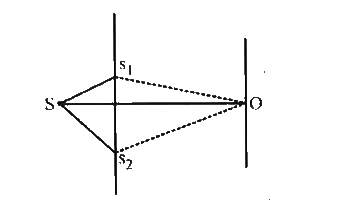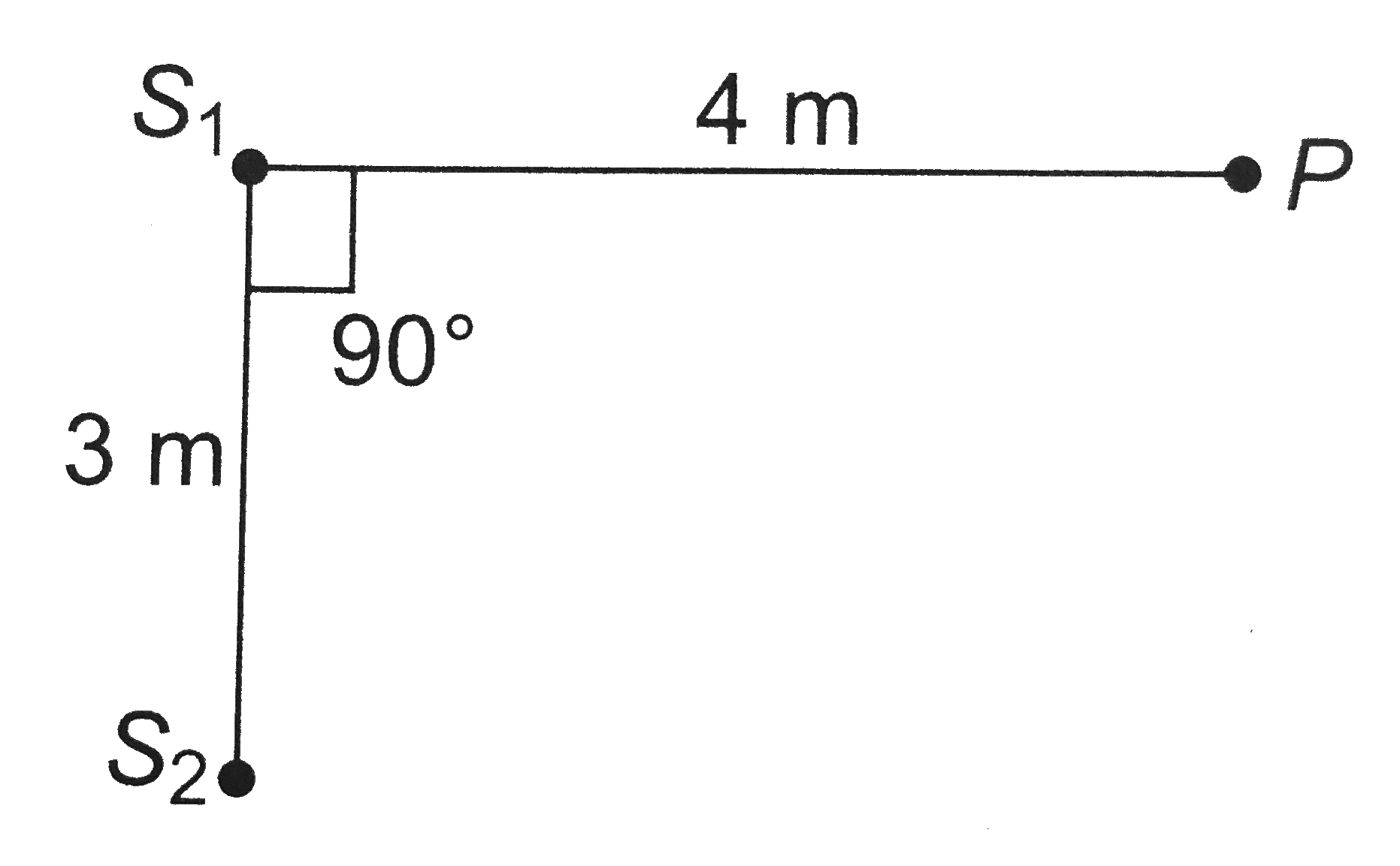Three sources of sound and of equal intensity are placed in a straight line with shown in the figure. At a point far away from the sources, the wave coming from is ahead in phase of that from Also, the wave coming from is ahead of that from What would be the resultant intensity of sound at ?


Resultant of these three amplitudes
Topper's Solved these Questions
Similar Questions
Three sources of sound S1,S2andS3ofequal∫ensityareplaced∈astraightl∈ewithS_1S_2=S_2=S_3.Atap∮P.farawayomthesources,thewavecomingomS_2 si 120^@ahead∈phaseoftˆomS_1.Also,thewavecomingomS_3 is 120^@aheadoftˆomS_2. What would be the resultant intensity of sound at P?

View SolutionIf S1,S2andS3 be respectively the sum of n, 2n and 3n terms of a G.P., prove that S1(S3−S2)=(S2−S1)2
View Solution
Knowledge Check
If S1,S2,S3 are the sums of n, 2n, 3n terms respectively of an A.P., then S3/(S2−S1)−
A1B2C3D4A coherent light is incident on two paralle slits S1andS2. At a point P1 the frings will be dark if the phase difference between the rays coming from S1andS2 is
Anπ radiansB(n+0.5)π radiansC(2n+0.5)π radiansD(2n+1)π radiansTwo stationary soruces of sound, S1 and S2 having an equal frequency are fixed some distance apart. The position A is left of S1 , position B in the middle of the two sources and positionC is to the right of S2. An observer starts moving with velocity V0 from position A towards S1, then
Abeats for three position A, B and C will be heardBbeats will be heard from A and C but not in case of BCbeats will be not heard for A and C but will be heard for BDbeats will be not heard for three position of A, B and C
If S1,S2,S3 be respectively the sums of n, 2n and 3n terms of a G.P., prove that S1(S3−S2)=(S2−S1)2.
View SolutionIf S1,S2,S3be respectively the sum of n,2n and 3n terms of a GP, then S1(S3−S2)(S2−S1)2 is equal to
View SolutionTwo microwave sources S1 and S2 are located at a distance of 4λ from each other along Y-axis,with S1 at the origin as shown in the figure.A microwave detector D moves along the X-axis away from S1 .The first maximum is obtained for x equal to: (wavelength of the microwave is
View SolutionIn an interference experiment, the two slits S1andS2 are not equidistant from the source S. then the central fringe at 0 will be

View Solution
S1 and S2 are two coherent sources of sound of frequency 110Hz each they have no initial phase difference. The intensity at a point P due to S1 is I0 and due to S2 is 4I0. If the velocity of sound is 330m/s then the resultant intensity at P is
View Solution
